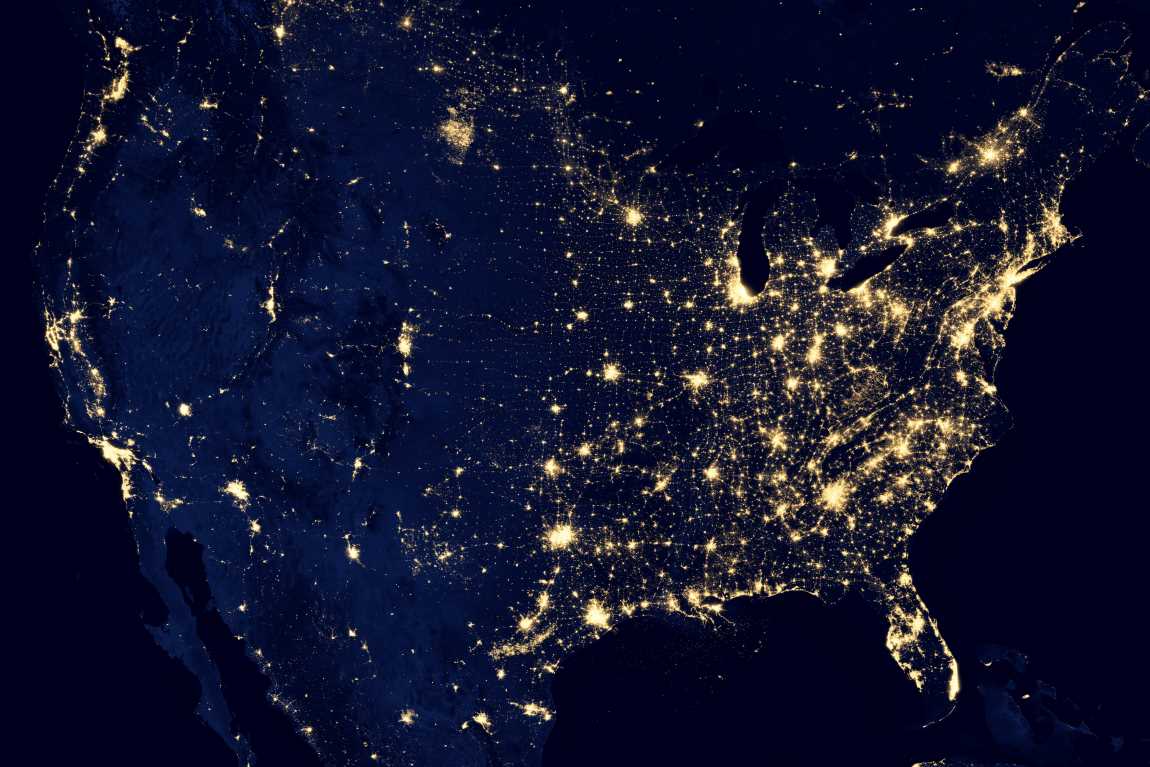In October 2024, the United States experienced rapid drought expansion, extreme heat, and a complex interplay of weather events that have set new records and intensified existing climate challenges.
The month closed with 87.16% of the contiguous U.S. in some degree of dryness or drought, according to the U.S. Drought Monitor – an all-time high in the 25-year history of the monitor. Record-breaking warmth paired with unusually low precipitation have become defining characteristics for this October.
Near-record warmth and historic dryness
The average temperature across the contiguous U.S. reached 59.0°F (aprox. 15°C), which is 4.9°F (2.7°C) above the historical October average.
This temperature positioned October 2024 as the second-warmest on record, with record-breaking heat observed in states like Utah, Arizona, New Mexico, and Texas. Similarly, California, Colorado, Montana, and Wyoming each recorded their second warmest October, with ten additional states ranking in their top ten for October heat records.

This trend is not limited to October alone; year-to-date temperatures for January through October 2024 have also been the second warmest on record. States from New Mexico to New York, including Michigan, Ohio, Pennsylvania, and New England, experienced their hottest January-October period.
“Record warmth from the Southwest through the Northeast has highlighted the year, with states consistently ranking in the top ten for heat,” noted climate analysts.
While Alaska did not see record heat, its average October temperature was 27.8°F (-2.3°C), positioning it within the middle third of historical records. Mild temperatures were observed across much of the state, with above-average warmth in the North Slope, West Coast, and Aleutians.
Drought crisis spreads across the U.S.
Drought conditions surged across the Lower 48, with October setting the largest one-month increase in drought coverage ever recorded.
As of the end of October, 54.1% of the contiguous U.S. was experiencing moderate to exceptional drought, marking a 22.6% rise from the beginning of the month. Warm and dry weather conditions exacerbated drought across the Deep South, northern Plains, Great Lakes, Northwest, and Southwest.
Many Mid-Atlantic cities, including Philadelphia, Newark, and Norfolk, endured record-breaking stretches without measurable precipitation, further intensifying drought stress.
Despite record rainfall from Hurricane Helene in September, the Southeast quickly returned to drought as dry conditions prevailed throughout October.
Record low precipitation across Lower 48
The month’s precipitation statistics underscore the severity of the drought.
Nationwide, October precipitation averaged only 0.95 inches (2.4 cm) – 1.21 inches (3.1 cm) below normal – placing October 2024 in a tie with October 1963 as the second driest on record.

Delaware and New Jersey experienced their driest October ever, and 19 other states from Texas to the Northeast recorded top-10 levels of dryness.
While the contiguous U.S. faced drought, Alaska’s precipitation varied, with the North Slope and Central Interior experiencing above-average rainfall, while the Panhandle and southern coastal areas saw mixed conditions.
Overall, the year-to-date precipitation for the Lower 48 remains within the wettest third of the historical record, primarily due to high rain totals earlier in the year across the West Coast, Great Lakes, and Northeast.
The October climate narrative includes the impact of Hurricane Milton, which followed Hurricane Helene’s September landfall. Milton, which became a Category 5 storm, went on record as the Gulf of Mexico’s strongest late-season storm. Making landfall in Florida as a Category 3 hurricane, it left millions without power, spawned over 100 tornadoes, and added to the economic toll as part of the Billion Dollar Weather and Climate Disaster list.
Outlook and future risks
Looking ahead, the Climate Prediction Center’s November outlook predicts warmer-than-average temperatures across the eastern U.S. and northern Alaska, with possible drought improvement across the Great Lakes and southern Plains.
In contrast, persistent drought is likely to remain across the Northwest, northern Plains, and Southwest. The National Interagency Fire Center also warns of above-normal wildland fire risks in states from the Gulf Coast to southern New England.
With this significant expansion of drought, continued temperature records, and increasing extreme weather events, October 2024 reflects intensifying climate patterns that are expected to continue influencing the U.S.
Source: NOAA National Centers for Environmental Information
Featured image credit: NASA | Unsplash




